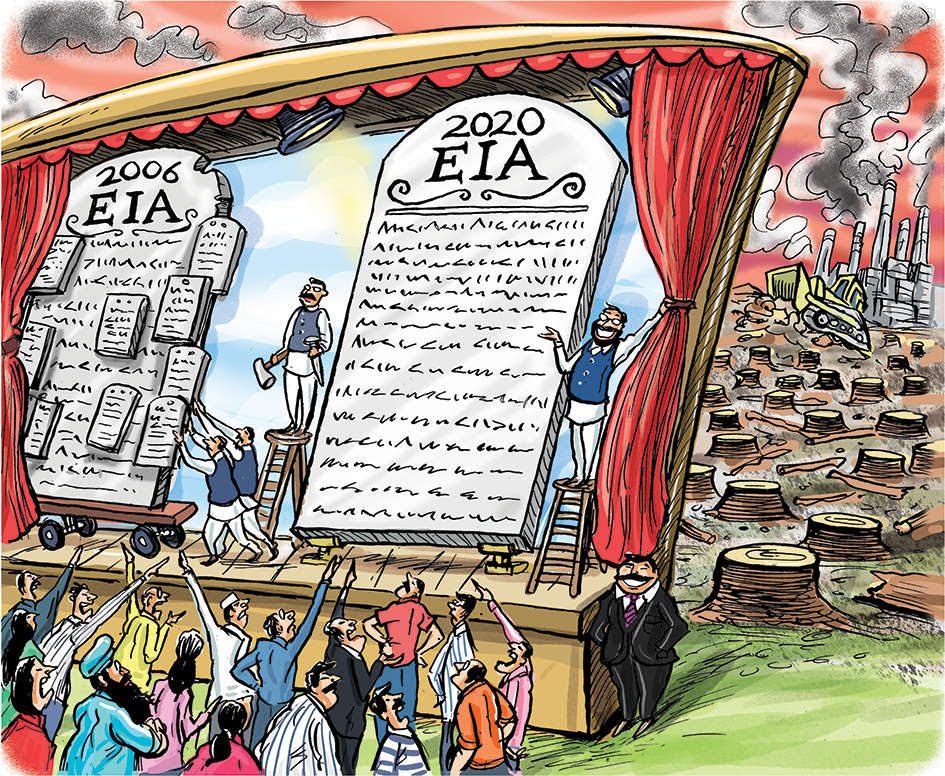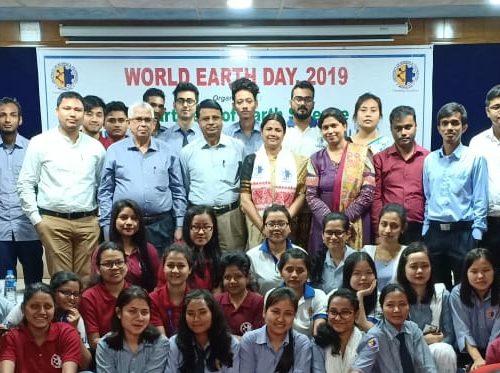The Draft Environment Impact Assessment (EIA) notification 2020 has become a hot potato for the ministry of environment, forest & climate change (MoEF&CC). First, the Delhi high court overruled the ministry’s decision on the time limit for public comments and increased it till August 11. Then, in response to a formal complaint of the environment minister for spamming his email account, the cybercrime unit of the Delhi police invoked a terrorism-related law to shut down the website of young environmental campaigners, who were running an online campaign against the draft notification.
Though the police have now withdrawn the notice, the public uproar against the draft notification continues. Reportedly, lakhs of people have written to MoEF&CC to scrap the draft. So why is there such a hullabaloo around this subordinate legislation?
Chad Crowe
The draft EIA notification 2020 seeks to replace the existing law – the EIA notification 2006 – which grants Environment Clearance (EC) to projects. The major criticisms against the new draft are that it dilutes scope of public participation, legalises post-facto EC, removes the requirements of EIA study for several categories of projects, and weakens the provisions of reporting by companies. To understand the significance of these changes, let’s look at the 2006 law.
The EIA notification 2006 is possibly the most amended piece of environmental law. It has been amended 43 times, and at least 50 office memorandums (worth 350 pages) have been issued to tweak this law. Many of these changes have diluted the original version for some or other industry. The 2020 draft, in large part, brings together several of these revisions.
Therefore, effectively the 2020 version is a little worse than the existing one. So, while I appreciate the criticism of the proposed draft, keeping the 2006 version or even improving it is not going to solve the environmental problems in the country either. Let me explain why.
First, the approach of conducting EIA of individual projects is bad science. The environment is affected by the cumulative impacts of all activities, which project-specific EIAs fail to capture. Even if individual projects meet all benchmarks, their cumulative effects may still destroy the environment. This is evident in most mining and industrial areas of the country – from Singrauli to Korba and from Vapi to Patancheru.
Second, the EIA report, which forms the basis for EC decisions, is prepared by a consultant paid by the project proponent. This creates an apparent conflict of interest, and therefore most EIA reports are not worth the paper they are written on. I am yet to come across an EIA report that says that a project is likely to have significant ecological impacts.
Third, the process of the public hearing, which is mandated to take into account the concerns of the project-affected people, is a sham. Public hearing as practised in India is neither an informed consultation nor an informed consent. Most times, it is organised in the presence of police force, and physical violence is not uncommon.
Worse still, concerns of the community are most often dealt with in a cursory way by the expert appraisal committees (EACs). EACs typically ask companies to make some investments like building schools or providing drinking water to appease the community. MoEF&CC has even formalised this by calling these expenditures as ‘corporate environment responsibility’ (CER) and directing companies to earmark 0.125-2% of the capital investment on CER.
Finally, the environmental conditions imposed on the companies are rarely monitored by authorities. Monitoring is based on self-certified half-yearly reports submitted by companies; this has been reduced to yearly report in the 2020 draft.
The fact is that the current EIA and EC process in India is defunct. While it involves a lot of paperwork, there is little improvement on the ground. 99.9% of the projects are cleared, and non-compliance of the safeguards is rampant. The paperwork and transaction costs, on the other hand, gives legitimacy to industries to argue for watering down the process further.
It is, therefore, time that we demand a new EIA law based on sound science, and robust and transparent decision making processes to safeguard environment and community rights as well as to reduce investment risks of industries. This can be achieved by integrating three environmental concepts.
The first is the strategic environmental assessment (SEA). SEA will help to evaluate the ecological ramification of policies and plans and address concerns at the earliest stage of the decision making process. Many countries have adopted SEA to integrate environmental concerns in policy making.
The second is the regional planning approach. This involves conducting carrying capacity studies and developing regional plans based on them. This will allow us to take into account cumulative impacts and also provide information to project proponents to decide the location of the projects beforehand.
The third is project specific EIAs. In this, EIAs should be done for major projects and not for all. The focus here should be to improve environmental management plans and post-clearance monitoring. To ensure quality EIA reports, an environment information centre should be established to provide independent data to consultants and the EACs. In all the three processes, public participation should be ensured to improve assessment and scrutiny.
The EIA process is the most important piece of environmental law as it has the scope to decide the development trajectory of the country. But this powerful piece of legislation has never been discussed or legislated by the Parliament. Time to take the EIA discourse to the Parliament floor and develop a new law suitable for the 21st century.
AUTHOR
Chandra Bhushan:
The writer is CEO, International Forum for Environment, Sustainability and Technology (iFOREST)




